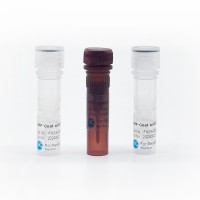Whole-Cell and Microcell Fusion for the Identification of Natural Regulators of Telomerase
互联网
446
The ability of tumor cells to grow indefinitely contrasts sharply with the growth of normal cells. When normal human cells are grown in vitro , they undergo a limited number of divisions. This property, termed replicative senescence, is lost when cells become tumorigenic. However, whole-cell hybrids between normal and immortal cells are mortal, indicating that cellular senescence is dominant and normal cells contain genes that limit cell growth (1 ,2 ). These findings have been confirmed and expanded by microcell transfer studies in which individual chromosomes from donor cells are introduced into recipient cells. Depending on the recipient cells, transfer of at least seven different human chromosomes has been shown to induce cellular senescence (3 -9 ). Thus, normal cells have developed many mechanisms to prevent unlimited cell growth. One of them is cellular suicide, or apoptosis, and is controlled (at least in part) by the proteins encoded by two tumor suppressor genes, namely p53 (10 ) and RB (11 ). Another apparent mechanism is the progressive shortening of the ends of chromosomes (telomeres), following each cycle of cellular replication, leading to a state of cellular senescence after the completion of a certain number of replicative cycles (12 ).









